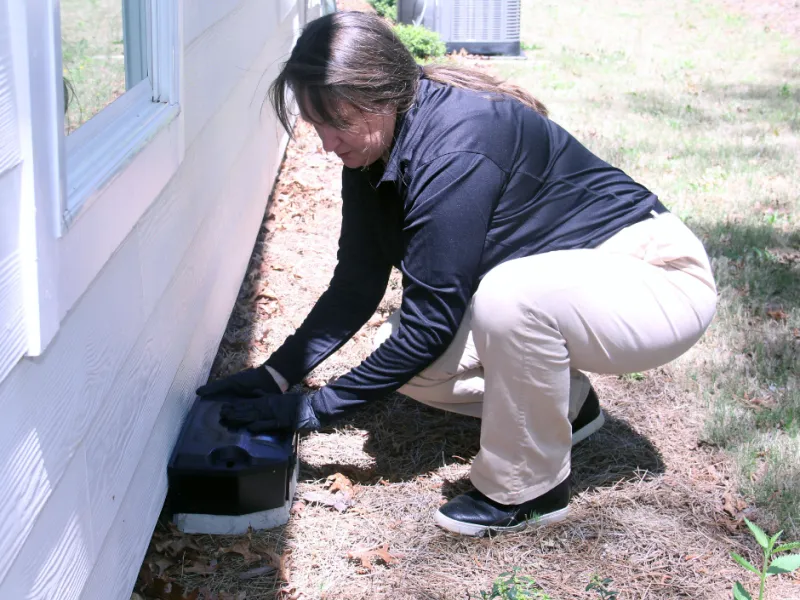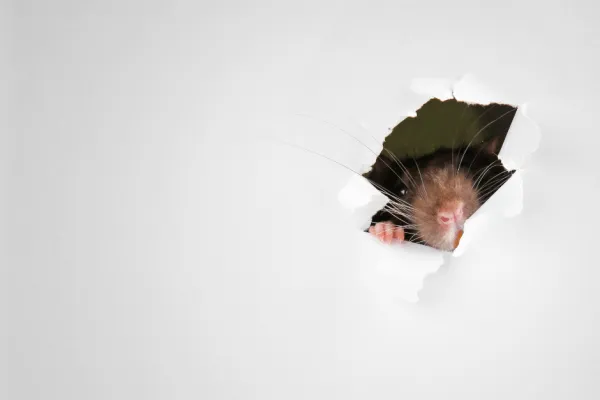Top Entry Points For Rodents

Top Entry Points Rodents Use to Invade Your Home
When the weather cools or food becomes scarce, rodents like mice and rats begin searching for a warm, safe place to settle. Unfortunately, your home may be the perfect target. What surprises many DMV homeowners is just how small a gap rodents need to squeeze through—mice can fit through an opening as small as a dime!
If you're noticing scratching in the walls, droppings in the pantry, or gnawed food packaging, rodents may have already found their way inside. The good news? You can stop them by knowing their favorite entry points and sealing them up before it's too late.
1. Gaps Around Doors
Rodents can squeeze through shockingly small gaps. Mice need only about ¼ inch—if you can slide a pencil into a gap, a mouse can probably fit. Roof rats and Norway rats can fit through openings around ½ inch wide, roughly the width of a finger. As a rule of thumb, if a rodent can get its head through, the rest usually follows—and they'll chew soft materials to widen small gaps. Worn-out weatherstrips or a gap under your garage or basement door is like an open invitation.
How to Seal It:
Install or replace weatherstripping around exterior doors.
Add a sturdy door sweep to block gaps at the bottom.
Keep garage doors closed whenever possible.
2. Cracks Around Windows
Loose-fitting windows or damaged caulking can give rodents an easy way inside.
How to Seal It:
Check for gaps or cracks around window frames.
Use caulk or weather-resistant sealant to close openings. Ensure the window screens are intact and securely in place.
3. Holes in Walls or Foundations
Even a small crack in your foundation or siding can serve as a doorway for mice and rats.
How to Seal It:
Inspect your home's foundation for cracks.
Seal small holes with caulk or concrete patch.
Use steel wool or wire mesh for larger gaps—rodents can't chew through it.
4. Utility Line Openings
Openings around pipes, cables, and wires often leave small gaps that rodents can easily squeeze through.
How to Seal It:
Use an expanding sealant designed for pest control.
For larger openings, install metal mesh or rodent-proof covers.
Check dryer vents, AC lines, and plumbing access points.
5. Roof and Attic Openings
Rodents don't just sneak in at ground level—they're great climbers, too. With sharp claws, bendy bodies, and strong back legs, they can climb siding, gutters, and even trees. That means they can reach higher entry points, like your attic or roof, that you might not expect.
Siding & Brick: Mice and rats can grip small ridges in siding or bricks to climb straight up walls.
Trees & Vines: Branches hanging close to the roof act like ladders, giving rodents easy access to your attic or eaves.
Gutters & Downspouts: Rodents use gutters as climbing tracks, sneaking right up to rooflines.
Once they're up high, rodents can slip inside through roof vents, soffits, loose shingles, or attic gaps.
How to Seal It:
Repair loose shingles or damaged soffits.
Cover attic vents with rodent-proof mesh.
Trim tree branches back from the roof to reduce access points.
6. Chimneys and Vents
Chimneys and dryer vents can act like highways straight into your home.
How to Seal It:
Install chimney caps and vent covers.
Regularly inspect vents to ensure covers are intact and secure.
7. Gaps Around Kitchen or Basement Areas
Rodents often target areas near food storage or where moisture is present. Basements, crawl spaces, and kitchens are prime targets.
How to Seal It:
Store food in airtight containers.
Repair cracks along baseboards and floors.
Use dehumidifiers in areas prone to dampness, such as basements.
Why Sealing Entry Points Matters
Rodents may look small, but the damage they cause is anything but. Once they enter your home, they pose serious health and safety risks that extend far beyond being a nuisance.
Contamination and Health Risks
Rodents leave behind droppings, urine, and hair everywhere they travel. These waste materials can contaminate your food, countertops, and storage areas. Even worse, they can spread dangerous diseases such as:
Salmonella - a bacterium that causes severe food poisoning.
Hantavirus - a virus carried by rodent droppings and urine that can cause severe respiratory illness.
Leptospirosis - a disease linked to contaminated water and surfaces.
Fire Hazards from Chewing
Rodents have teeth that never stop growing, which is why they constantly gnaw on things to keep them trimmed down. Unfortunately, that often includes:
Electrical wires (leading to shorts or even house fires)
Insulation (reducing your home's energy efficiency)
Wood framing (weakening your home's structure over time)
According to fire safety experts, rodents are suspected of causing thousands of house fires each year just from chewing on wires.
Fast Breeders, Big Infestations
A single pair of mice can turn into a full-blown infestation in just a few months. That's because:
A female mouse can have up to 10 litters a year.
Each litter may have 6-12 babies.
Those babies are ready to reproduce in as little as 6 weeks.
Even with the best DIY sealing, rodents are sneaky. If you hear scratching at night, notice droppings, or see gnaw marks, it's time to bring in the pros. At PestNow, we don't just seal entry points—we track down infestations, eliminate the rodents safely, and prevent them from coming back.
Don't wait until rodents have moved in. Contact PestNow today for expert rodent control and exclusion services.
Rodent Frequently Asked Questions
1. How small of a hole can mice fit through?
Mice can squeeze through gaps as small as ¼ inch—the size of a dime.
2. Do rats use the same entry points as mice?
Yes, but rats need slightly larger openings (about ½ inch in diameter).
3. Will steel wool keep rodents out?
Yes, steel wool is effective because rodents can't chew through it. For best results, combine it with caulk or foam sealant.
4. Are rodents more active in certain seasons?
Rodents invade homes year-round, but they become more aggressive in the fall and winter as they search for warmth and shelter.
5. Can rodents climb walls to get inside?
Absolutely. Mice and rats are skilled climbers and can scale brick, siding, and even gutters to access roofs and attics.
6. What's the best long-term solution to rodent problems?
A combination of exclusion (sealing entry points), sanitation, and professional pest control is the most effective strategy for managing rodents.


